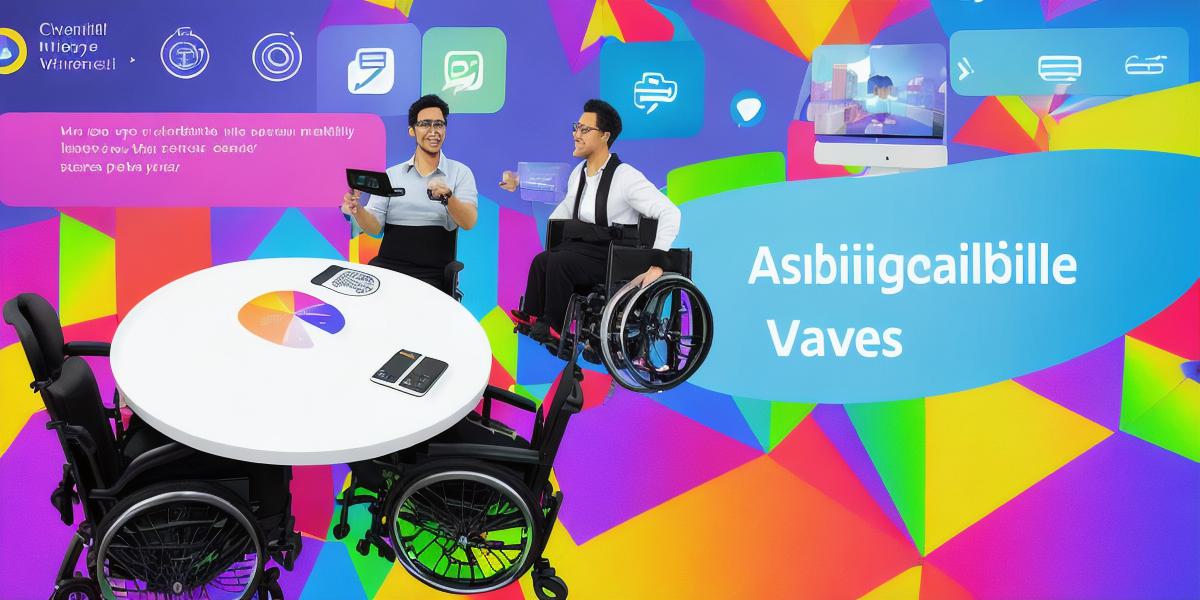Welcome!
You’ve asked about accessibility options for the metaverse, a collective virtual shared space, created by the convergence of virtually enhanced physical reality and physically persistent virtual reality. In this answer, we will discuss various features designed to make these immersive experiences more inclusive for all users, regardless of their abilities or disabilities.

1. Text-to-Speech (TTS) and Speech Recognition (SR):
Text-to-speech technology converts text into spoken words, enabling visually impaired users to navigate menus, read messages, and explore virtual environments through audio descriptions. In contrast, speech recognition allows users to interact with the metaverse using their voices instead of typing or manipulating controllers. These features are essential for individuals who have difficulty reading or typing due to physical disabilities or visual impairments.
2. Customizable User Interfaces (UI):
Customizable user interfaces enable users to modify various settings, such as font size, contrast, and color schemes, tailored to their individual preferences or accessibility needs. This flexibility ensures a more comfortable and accessible experience for users with different visual acuity levels, color blindness, or other sensory impairments.
3. Closed Captions and Subtitles:
Closed captions and subtitles provide textual versions of spoken content within the metaverse, allowing deaf or hard-of-hearing users to access vital information, such as dialogue or instructions, while also benefiting users who may not speak the primary language.
4. Haptic Feedback:
Haptic feedback is a tactile response to user interactions in virtual environments, providing an additional sensory experience that can help users navigate and understand their surroundings. This technology is particularly beneficial for individuals with visual impairments or other sensory disabilities, as it enables them to explore and interact with virtual spaces more effectively.
5. Assistive Devices and Adaptive Controllers:

Assistive devices and adaptive controllers offer enhanced accessibility features tailored to users with physical disabilities. For example, voice recognition software, eye-tracking systems, or specially designed controllers can help users interact with the metaverse more efficiently and comfortably.
6. Collaborative Virtual Environments:
Collaborative virtual environments enable users to come together and engage in shared experiences, providing opportunities for socialization, learning, and problem-solving. These inclusive spaces benefit all users by fostering a sense of community and offering access to diverse perspectives and expertise, ultimately promoting equality and inclusivity within the metaverse.
7. Training and Accessibility Resources:
Accessible training programs and resources are essential for ensuring that developers create and maintain metaverses that cater to the needs of all users. These resources can include guidelines on accessible design principles, accessibility testing tools, and support networks for individuals with disabilities or developers working to make their creations more inclusive.
In conclusion, the metaverse is constantly evolving, and its creators are increasingly focused on enhancing accessibility to make virtual experiences more inclusive for all users. Through text-to-speech and speech recognition, customizable interfaces, closed captions, haptic feedback, assistive devices, collaborative environments, and training resources, the metaverse is becoming a more welcoming and engaging space for everyone, regardless of their abilities or disabilities.
